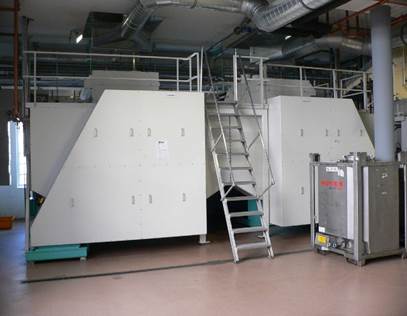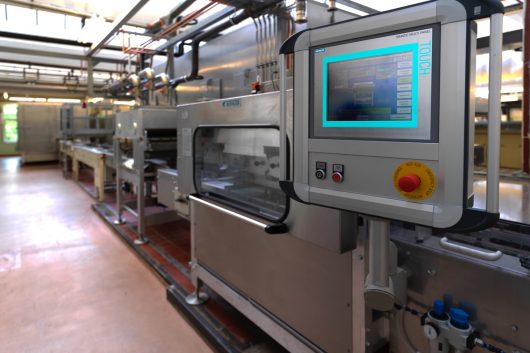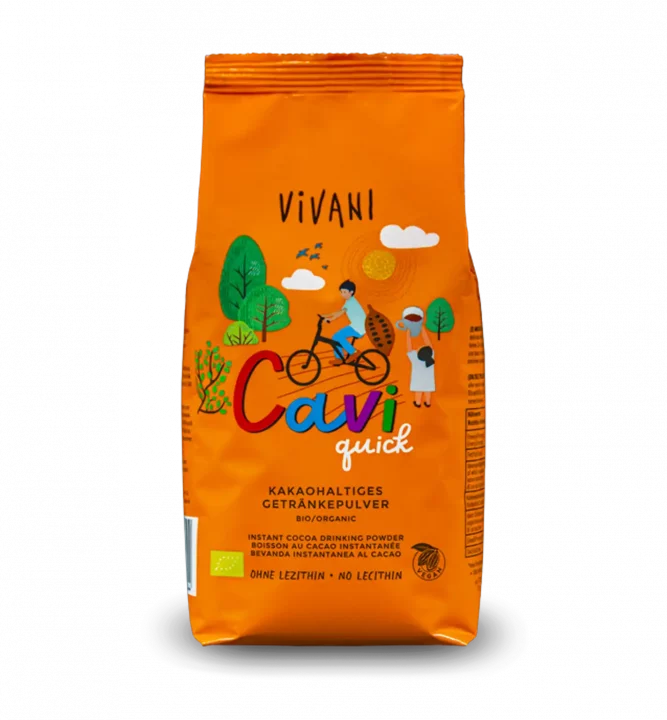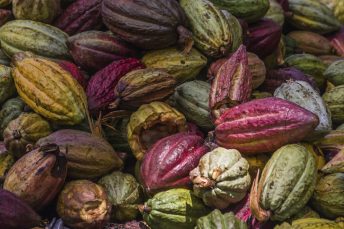From cocoa mass
to chocolate
From-tree-to-bar, part 4
Text:
Katharina Kuhlmann
Photography:
Weinrich Schokoladenfabrik
19 Juli 2018

Our four-part special “From-tree-to-bar” is on its way to the finish line! The sweet award is the long-anticipated chocolate that made its way from tree to fruit to processing and the final product. It’s been a long way! The final, difficult leg takes the cocoa mass through several big machines like rollers and conches and ends with making bars and wrapping it for trade. Some participants gave up early and accepted the second (cocoa butter) and third place (cocoa powder). We hope, you’re enjoying your next piece of chocolate – and spare a thought on its long way from the tree to our table.
Mixing, rolling, conching – the chocolate Ironman continues
In the last part of our special „From-tree-to-bar” the so-called cocoa mass was finished, which is made of roasted, broken, peeled and milled cocoa beans and is liquid when warm. The cocoa mass is the basis for all further processing operations to the final chocolate product (or cocoa butter and powder, see below). You can’t generalise what’s added to the mass – this depends on the type of chocolate. According to the variety (dark, milk, white) different ingredients are added to the cocoa mass. Only an addition of sugar and cocoa butter is needed for dark chocolate with a high percentage of cocoa, milk chocolate gets an additional part of milk power and cocoa butter. White chocolate is made by using cocoa butter only instead of cocoa mass.
No matter what you add, the mixer, called mélangeur, mixes all ingredients patiently and produces a firm dough after 30 minutes that tastes like chocolate but that feels grainy and sandy on the palate. That’s why it has to find its way to the mill, where the proto-chocolate is processed. The standard two-stage process involves a two-roll mill and a five-roll mill, the result is a mass that’s only a few thousandth millimetre thick. This mass doesn’t feel grainy on your tongue and is more like a flaky powder. Due to chemical transformations, it gained a few more flavours, but still can’t be called chocolate. In the next step the mass has to be heated again.
The machine being used at this stage is a real legend and revolutionised the chocolate production by creating the creamy melting of the formerly sandy, solid product: the conche. In the classical version, a stirring unit made from rolls creates heat by friction in a shallow basin and the temperature of the melting chocolate raises (traditionally to 76 to 78 °C). Other effects of the conching: remaining moisture is taken out of the chocolate, flavours are perfected and unpleasant flavours and scents, for example by acetic acid, disappear. One mystery of chocolate lies in the conching times: for gourmets, a long conching time (originally at least 72 hours!) makes an exquisite quality chocolate. Modern machine types demonstrate the opposite and show that conching times up to 48 hours can deliver the same results. The inventor of the miraculous conching machine is the Swiss Rodolphe Lindt, the founder of the company Lindt & Sprüngli, who developed the machine in Bern in 1879.

Final finish and chemical processes – the destination in view
After the liquid chocolate has finished its spin cycle more ingredients are added depending on the variety and the standard of quality. Some chocolates, usually conventional mass products, get a dash of a maximum of 0,2 % soy lecithin to influence the thickness of the mass. In particular the addition of fats is important at this stage. The best and healthiest fat is the cocoa butter. There are no determined guidelines to their addition, whereas plant-based “external fats” like palm oil and shea butter are only allowed to be added up to a maximum total percentage of 5 %. Chocolatiers and producers of quality chocolate usually use cocoa butter as the sole addition, which gives chocolate a beautiful shine, melting and crack. Furthermore, the fat acts as a flavour carrier and supports the flavour of the chocolate. The amount of cocoa butter rises with the lightness of the chocolate. While dark chocolate with a high percentage of cocoa only contains little cocoa butter, it is the main ingredient of white chocolate.
It’s getting complicated now! The following process of tempering is pure chemistry. Anyone who has worked with coating at home knows that you can make many mistakes converting it into a cake coating. One classic issue: Chocolate cake can look grey instead of dark brown and looks unappetising. The main reason is excessive heat during the melting of the temperature-sensitive chocolate. The different methods have one thing in common: coating has to be monitored while cooling down and warming up again, each type has a prescribed processing temperature between 28 and 32 °C.
Tempering in the chocolate factory isn’t different from the process at home – it just takes place on a large scale. The chemical processes we don’t want to explain in detail are all about the so-called solidification crystals in the fatty part of the chocolate. They are divided by a stage model, which shape is achieved by the tempering of the chocolate. Whatever might happen to the atoms and crystals – in the end we have a chocolate with great shine, perfect crack and long shelf live.

After tempering the planned shape of the end product decides the further steps. Do we want to make chocolate bars, chocolate treats or even hollow figures? Each shape of chocolate requires its own processing steps, for example filled chocolate bars. Let’s stick to the simple standard model of the chocolate bar. In case nuts or similar ingredients have to be added the right time has come after tempering. The next step is the “moulding” in preheated bar moulds. By means of vibration remaining air bubbles are removed from the bar. During cooling the chocolate bar shrinks a little in its mould, which makes it easier to “demould” it. We did it! Wrapped in its specially designed coat the chocolate makes its way into the shops – and is devoured by its biggest fans.
Cocoa mass at a crossroads – cocoa butter and powder instead of chocolate
Like mentioned before not all participants of the chocolate marathon “From-tree-to-bar” reach the finish line. After the cocoa mass is produced in the chocolate factory you can also make products cocoa butter and cocoa powder out of it instead of chocolate. These are really important products because without cocoa butter the vast majority or chocolate varieties couldn’t be produced – and what would the world be without a nice cup of hot cocoa?
The production of cocoa butter and powder isn’t nearly as complicated as the production of chocolate. The cocoa mass is inserted into a grease press. Firstly, a yellowish, liquid oil is produced that becomes solid cocoa butter after cooling. Secondly, a hard residue is extracted, the so-called cocoa press cake.
Depending on the use the cocoa butter faces further steps like filtration, centrifugation and refining. Cocoa butter is a fat of very high quality and is usually used for chocolate production. Products like nougat also contain cocoa butter as an ingredient. Furthermore, cocoa butter is a popular ingredient for cosmetics and perfumery.
To make cocoa out of the cocoa press cake, you have to mill it. Depending on the amount of fat left from the cocoa butter in the press cake you distinguish between weakly de-oiled (only 20-22 % fat) and low-fat (only 11-12 % fat) cocoa powder. Pure cocoa powder is perfect for baking and is often confused with instant cocoa powder which you can dissolve easily in cold milk and other liquids. This is made possible by a further process where the powder is vaporised with a special aerosol mist. Furthermore, ingredients like sugar, soy lecithin, and usually also salt and unnecessary vitamins are added to the instant drink powder. But there is another way: By using new process technologies instant cocoa power without the addition of lecithin can be produced. Our VIVANI cocoa drink Cavi Quick contains raw cane sugar and organically grown low-fat cocoa power – nothing else.

Kavi Rychlý
Instantní čokoládový prášek | vegan
Verwandte Artikel
Čokoládový časopis


